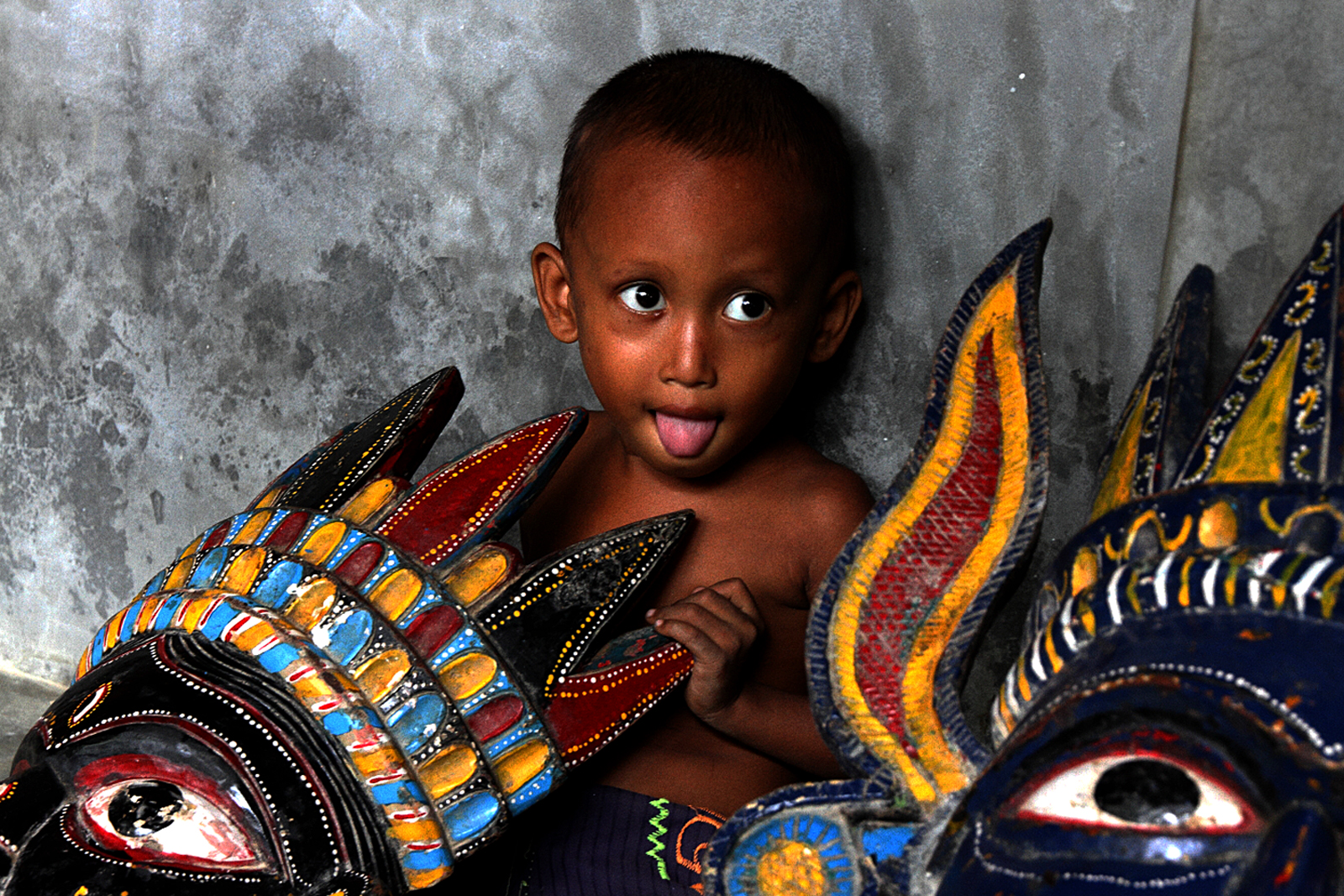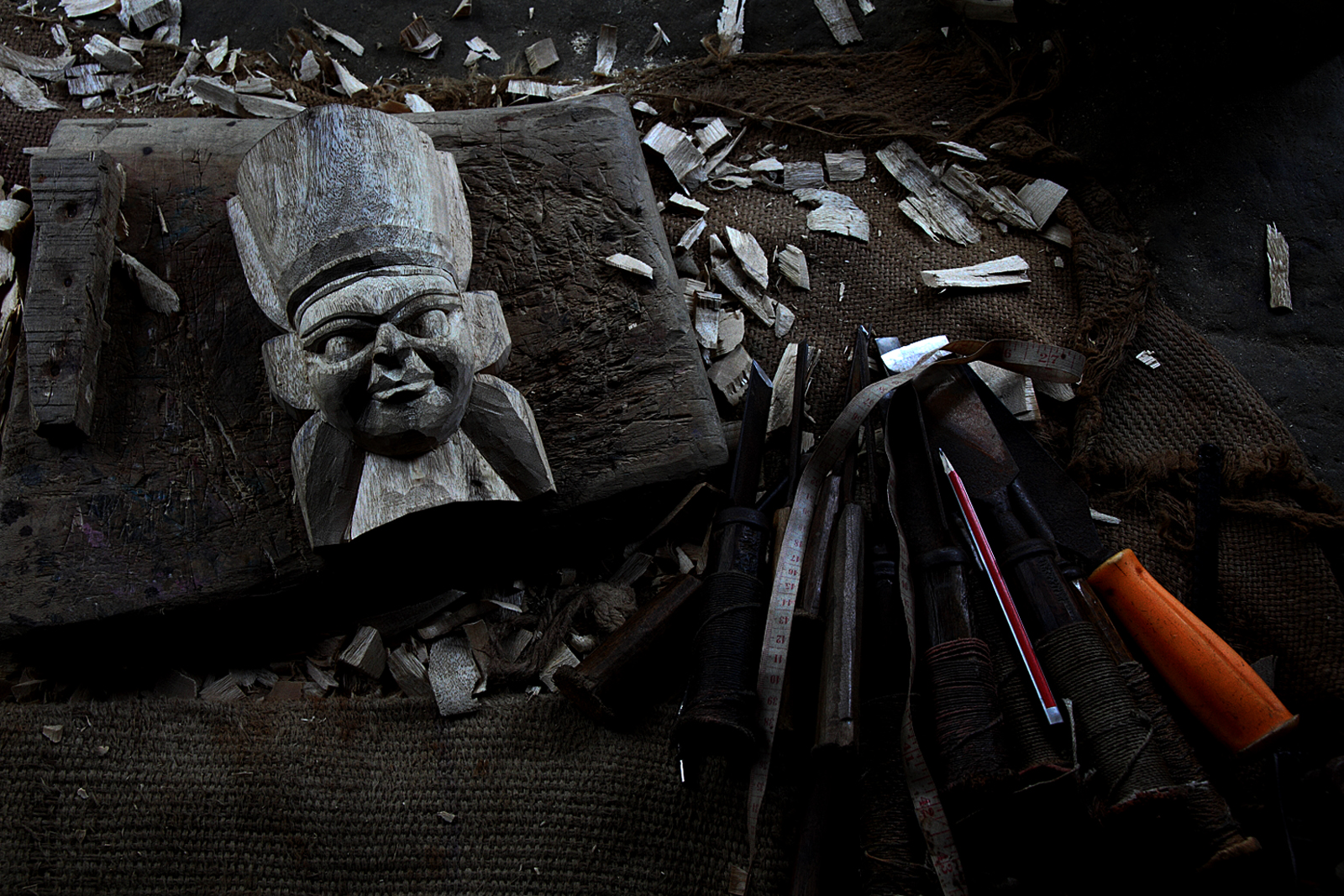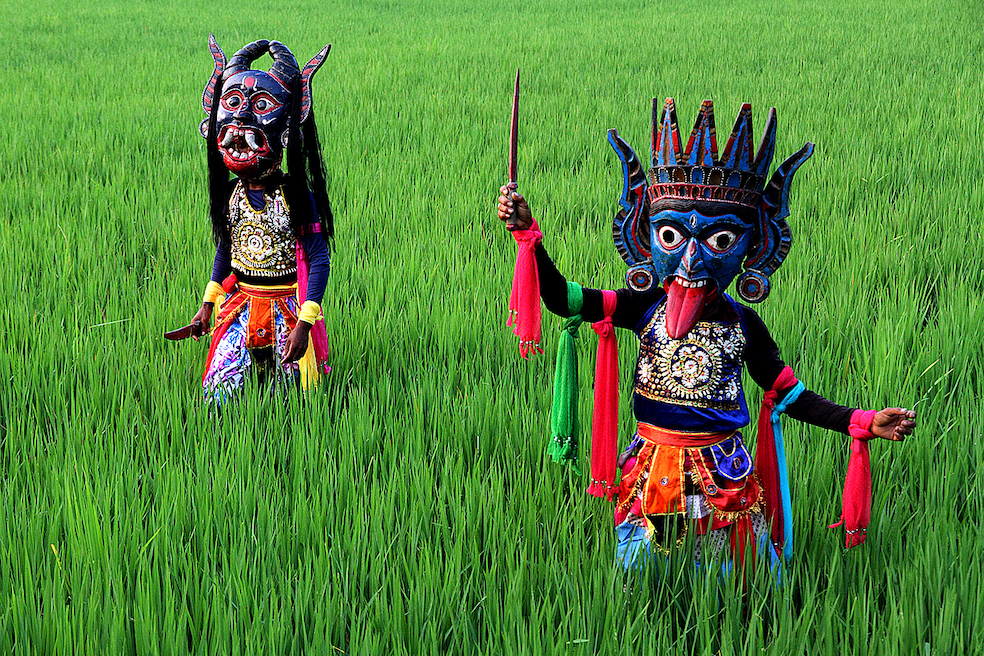Gomira dance is a rural dance form mainly practised in the Dinajpur district of West Bengal. The dance is usually performed by the villagers to please the gods to usher in ‘good forces’ and ward off ‘evil forces’. This dance form is a part of varying traditions and the rich cultural history of Bengal.


Gomira is a masked dance form. The word ‘Gomira’ has been derived from the colloquial form of the word ‘Gram-Chandi’ or the female deity who is the protective force of the village. The exact origin of the dance form is not traceable and the knowledge has been lost over time. Another section believes that the word ‘Gomira’ has been derived from the word ‘Gamar’, the wood that is mainly used to make the masks. The Gomira masks, or ‘Mukha’, are thus inexorably linked with the dance festival.


The dance is mainly celebrated during the Bengali months of Baisakh-Jaishtya and Asarh – between mid-April and mid-July. This is the harvest season for the villages. The dance is also performed during the period of harvesting of mangoes when the puja of Amat-Kali is celebrated. This is usually during the period of Jaishtya.


The dance has evolved into mainly two forms – the Gomira form and the Ram-Vanvas form. The Gomira form is the traditional form with the characters of Bura-Buri (old man-old woman), Smasan Kali, Masan Kali, Dakini Bishwal, Signi Bishwal, Bagh (Tiger), Nar-Rakshas and Narsingha Avatar. The Ram-Vanvas form depicts the Van Kanda of Ramayana.


Traditionally, the dance starts with the entry of two characters Buro-Buri, who are actually said to be the human forms of Shiva and Parvati. After their performance, other masked dancers enter their arena to perform. According to the Gomira tradition, these gods took human shape and descended on earth so that they may bless the humans and help them to fight the forces of evil and establish a righteous way of life.
All images have been provided by the author.

